Books by Riccardo Macchioro
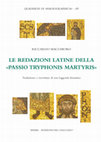
La leggenda di san Trifone martire, scritta in greco nel V secolo, riscosse un notevole successo ... more La leggenda di san Trifone martire, scritta in greco nel V secolo, riscosse un notevole successo in Occidente. Fin dall’Alto Medioevo, infatti, sono attestate molteplici redazioni in latino, diffuse nelle regioni più diverse: da Roma a Bobbio, dal Friuli al Nord della Francia e all’Inghilterra. Proprio da Bobbio emerge la più antica traduzione latina, un fossile altomedievale che sopravvive in due soli codici; ma altre versioni ebbero un’ampia circolazione, come una« Passio Tryphonis» accolta nei grandi leggendari cisterciensi. Il volume esplora il dossier latino di Trifone in una prospettiva filologica, mirando a districare i complessi rapporti che intercorrono tra le forme testuali latine e l’originale greco. L’esame integrale della tradizione manoscritta e il confronto sistematico con i codici greci conducono a ipotizzare che siano state realizzate indipendentemente quattro traduzioni in latino della Passio greca; i testi latini, inoltre, permettono di ricostruire qualche aspetto della trasmissione del greco non più attingibile dalla tradizione diretta. Di queste quattro versioni, tutte anepigrafe, si pubblica l’edizione critica, unitamente a un commento linguistico e sulla tecnica di traduzione. Il percorso tra i testi ricalca il viaggio di una leggenda bizantina nell’Europa medievale latina; sebbene alcune tappe restino oscure, la vitalità dell’attività di traduzione intorno a questo testo risulta senz’altro sorprendente.
The byzantine legend of saint Tryphon achieved resounding success in the West: the aim of the present volume is to interpret the relationship between the various Latin redactions of the text – spread all over medieval Europe – and the original Greek model. A survey of the Latin manuscript tradition, systematically compared to the Greek manuscripts, leads to the hypothesis that four versions of the Greek «passio» were actually written: this volume offers the critical edition of each of these versions.
Edited Books by Riccardo Macchioro

Nell'anno 313 gli Augusti Costantino e Licinio si incontrarono a Milano: a tale incontro risale i... more Nell'anno 313 gli Augusti Costantino e Licinio si incontrarono a Milano: a tale incontro risale il provvedimento che concesse, per usare le parole di Lattanzio, «et Christianis et omnibus liberam potestatem sequendi religionem, quam quisque voluisset». Millesettecento anni dopo, nella medesima città, dall'8 all'11 maggio 2013, studiosi di varie materie e provenienti da tutto il mondo si riunirono per presentare i risultati delle proprie ricerche a un convegno dal titolo Costantino a Milano. L'Editto e la sua storia , organizzato in collaborazione con la Pontificia Accademia di Scienze Storiche. Il presente volume raccoglie quasi integralmente gli atti del convegno di Milano, riproponendone la struttura tripartita: L'editto di Milano, Ricadute ed effetti dell'editto, Approcci specialistici. All'organizzazione del convegno milanese aveva lavorato un comitato scientifico, nel quale erano rappresentate le tre istituzioni milanesi coinvolte nel progetto: l'Accademia Ambrosiana presso la Veneranda . È giusto ricordare con particolare affetto la collega Paola Vismara, che sempre partecipò ai lavori del comitato con competenza e vivacità: purtroppo il 7 ottobre 2015 ci ha prematuramente e improvvisamente lasciato. È infine doveroso rivolgere un sentito ringraziamento alla Real Commissione per l'Italia del Sacro Militare Ordine Costantiniano di San Giorgio per avere generosamente finanziato la pubblicazione di questo volume.
Papers by Riccardo Macchioro

Filologia Mediolatina XXXI, pp. 25-55, 2024
This paper addresses two unstudied patristic translations of doubtful ascription to the renowned ... more This paper addresses two unstudied patristic translations of doubtful ascription to the renowned 12th century translator Burgundio of Pisa. The first section recalls the recent achievements of scholarship about Burgundio’s translation technique, and about the manuscript tradition of his Latin versions of Aristotle’s and Galen’s works. The manuscripts of several Latin versions by Burgundio bear a thick apparatus of glosses, that have the purpose to clarify the translation and make it more accessible to the readers. It has been convincingly argued that these notes go back to an original design of the translator. The second section focuses on patristic translations. First, it is shown that the text entitled Athanasius de fide in the ms. Firenze, Biblioteca Medicea Laurenziana, Plut. 14 dex. 7 (commonly assumed to be a Burgundio’s version of a De fide et spiritu sancto by Athanasius of Alexandria) is instead a copy of the De spiritu sancto by Faustus of Riez. Secondly, a more in-depth examination is devoted to the Latin translation of Basil of Caesarea’s Hexaemeron transmitted by the mss. Firenze, Biblioteca Medicea Laurenziana, Plut. 13 dex. 9 and Città del Vaticano, Biblioteca Apostolica Vaticana, Urb. Lat. 61. The Latin text is consistent with all the distinctive features of Burgundio’s method, and the Florence manuscript contains a number of annotations in the margins and in the line-spacing that prove in all respect similar to those added by Burgundio to his Aristotelian versions. On this ground, the case is made that the version of Basil’s Hexaemeron is to be attributed to the Pisan translator.

Revue Bénédictine, 133 (II), pp. 309-338, 2023
This essay aims at shedding light on the formation of the prominent medieval homiliary known as S... more This essay aims at shedding light on the formation of the prominent medieval homiliary known as Sancti Catholici Patres (SCP) and on its pivotal role in the medieval transmission of patristic homiletics. It focuses specifically on its extremely rich Augustinian content, which accounts for more than 160 out of the ca. 345 total entries of the compilation. Although it was initially thought that most of Augustine’s sermons had been drawn from another medieval collection (namely, the Collectio Tripartita), some soundings provided by foremost scholars such as Raymond Étaix and François Dolbeau (among others) have shown that more likely the relationship is the other way round. As a result, the provenance of those Augustinian sermons remains unknown. Relying on these results, the paper moves a step forward considering the transmission patterns of the sermons included in the SCP, and is structured as follows. After the introduction (par. 1), it conducts a thorough critical review of the existing literature on the SCP (par. 2). In a third section (par. 3), it proposes a new classification of the Augustinian sermons in the homiliary, and divides them into four groups according to the likelihood that the compilers have borrowed them from an already existing (and known) Augustinian collection. Since many of these sermons do not feature in other Augustinian compilations, and for some of them the SCP turns out to be the only or the main witness, the picture that emerges brings additional support to an hypothesis already formulated by Dolbeau : that the SCP was able to employ an ancient and wide collection of Augustinian sermons which has not survived as such. Thanks to the detailed survey of the homilies involved, the investigation paves the way to attempt a reconstruction of this collection. The thesis appears additionally strengthened by the fourth section (par. 4) : here, in the framework of a quest for the sources, the paper addresses the supposed relationships between the SCP and some prominent collections of Augustinian sermons via an in-depth textual analysis of selected sermons, both edited and unedited (CAE s 219; FU s 3; AU s 192; AU s 197; AU s 317; AU s 59; AU s 224; AU s 210; CAE s 142; AU s 93; PS-AU s 212). The results strongly challenge some current views regarding the interrelationships between sermon collections : e.g., reveal that the Caesarian Collectio Gallicana was probably not employed by the SCP, and question that the Gallicana was a source for Alanus’ homiliary (and, in addition, raise some problems with the current reconstruction of the Gallicana itself and its genesis). Moreover, also the extent and the nature of the contribution by Paul the Deacon’s homiliary to the SCP should probably be reconsidered. Finally, the textual analysis uncovers some interesting evidence that points to the existence of a lost collection of Augustine’s sermons that had started to be reworked into the Caesarian textual shape, but where the process has not been fully accomplished yet.
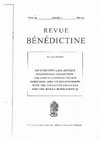
Revue Bénedictine, 133 (I), pp. 56-95, 2023
This essay aims at shedding light on the formation of the prominent medieval homiliary known as S... more This essay aims at shedding light on the formation of the prominent medieval homiliary known as Sancti Catholici Patres (SCP) and on its pivotal role in the medieval transmission of patristic homiletics. It focuses specifically on its extremely rich Augustinian content, which accounts for more than 160 out of the ca. 345 total entries of the compilation. Although it was initially thought that most of Augustine’s sermons had been drawn from another medieval collection (namely, the Collectio Tripartita), some soundings provided by foremost scholars such as Raymond Étaix and François Dolbeau (among others) have shown that more likely the relationship is the other way round. As a result, the provenance of those Augustinian sermons remains unknown. Relying on these results, the paper moves a step forward considering the transmission patterns of the sermons included in the SCP, and is structured as follows. After the introduction (par. 1), it conducts a thorough critical review of the existing literature on the SCP (par. 2). In a third section (par. 3), it proposes a new classification of the Augustinian sermons in the homiliary, and divides them into four groups according to the likelihood that the compilers have borrowed them from an already existing (and known) Augustinian collection. Since many of these sermons do not feature in other Augustinian compilations, and for some of them the SCP turns out to be the only or the main witness, the picture that emerges brings additional support to an hypothesis already formulated by Dolbeau : that the SCP was able to employ an ancient and wide collection of Augustinian sermons which has not survived as such. Thanks to the detailed survey of the homilies involved, the investigation paves the way to attempt a reconstruction of this collection. The thesis appears additionally strengthened by the fourth section (par. 4) : here, in the framework of a quest for the sources, the paper addresses the supposed relationships between the SCP and some prominent collections of Augustinian sermons via an in-depth textual analysis of selected sermons, both edited and unedited (CAE s 219; FU s 3; AU s 192; AU s 197; AU s 317; AU s 59; AU s 224; AU s 210; CAE s 142; AU s 93; PS-AU s 212). The results strongly challenge some current views regarding the interrelationships between sermon collections : e.g., reveal that the Caesarian Collectio Gallicana was probably not employed by the SCP, and question that the Gallicana was a source for Alanus’ homiliary (and, in addition, raise some problems with the current reconstruction of the Gallicana itself and its genesis). Moreover, also the extent and the nature of the contribution by Paul the Deacon’s homiliary to the SCP should probably be reconsidered. Finally, the textual analysis uncovers some interesting evidence that points to the existence of a lost collection of Augustine’s sermons that had started to be reworked into the Caesarian textual shape, but where the process has not been fully accomplished yet.
Dante e le enciclopedie medievali, 2023

Il Latino di Dante, ed. P. Chiesa - F. Favero, Firenze (SISMEL Del Galluzzo), 2022
This article provides some new insights into the employment and the ma- nipulation of the Latin l... more This article provides some new insights into the employment and the ma- nipulation of the Latin language by Dante Alighieri in the Monarchy; these results stem from the work conducted in the framework of the Vocabolario Dantesco Latino project. The inquiry deals with different aspects of the vocabulary of the Monarchy. In its first section, the paper offers a survey of some words that have turned out to be neologisms in the Latin production (among which are prolaboro, prefretus, coathleta, reostendo, prepeditivus), and suggests that their casting was sparked by rhythmic (i.e. related to the cursus) and/or expressive reasons. A second section focuses on Graecisms and words that Dante has borrowed from the Aristotelic corpus, exploring his relationship with the source material. In the case of politia and civilitas, as well as in that of vicus and vicinia, Dante does not just import the term, but rather proves able to further refine its meaning in order for it to better suit his own theoretical system. In other instances (optimates, emisperium) it has been possible to retrieve precisely the source passage that provided inspiration. Finally, the last section considers the influence of Huguccio of Pisa’s Magnae Derivationes on the Latin of Dante: by analysing several words, it aims at assessing its contribution to the language of the Monarchy from a new perspective.
Le sens des textes classiques au Moyen Âge. Transmission, exégèse, réécriture, 2022
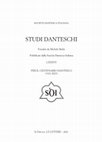
Studi Danteschi, 2021
This note examines from a linguistic point of view four words attested within the manuscript trad... more This note examines from a linguistic point of view four words attested within the manuscript tradition of the Monarchia, which prove hapax legomena in Latin. Three of them have been demonstrated to be neologisms cast by Dante: prolaboro, prefretus, and coathleta. In spite of having been consistently printed in critical editions, the latter two had never been identified as such so far. The likelihood that they were created by Dante himself is strongly supported by linguistic, stylistic, and rhythmic considerations, as well as by the fact that their features are compatible with the behaviour shown by Dante in other passages. A potential fourth neolo- gism (provigilo, printed by the most recent edition with a critically reviewed text) is show- cased only by a part of the manuscripts, whereas the others read pervigilo (chosen in the pre- vious editions). With regard to this reading, the note offers a survey of the relevant elements, which however do not allow for an undisputable solution.

Critica del testo e critica letteraria, ed. L. Castaldi - A. Degl’Innocenti - E. Menestò - F. Santi, Firenze 2020, pp. 59-96, 2020
© 2020 -SISMEL · Edizioni del Galluzzo v SOMMARIO VII Premessa CRITICA DEL TESTO E CRITICA LETTER... more © 2020 -SISMEL · Edizioni del Galluzzo v SOMMARIO VII Premessa CRITICA DEL TESTO E CRITICA LETTERARIA 3 Michele De Lazzer, In margine a una nuova edizione critica delle favole della recensio vetus del Romulus 25 Vera Fravventura, Varianti redazionali nella tradizione manoscritta del De rerum naturis di Rabano Mauro: il gruppo g 59 Riccardo Macchioro, Un prosimetro agiografico inedito dal ms. Vat., Arch. S. Pietro A.4: un'opera sconosciuta di Bruno di Querfurt? 97 Valeria Mattaloni, Un commento pseudo-gregoriano ai salmi penitenziali, attribuibile a Eriberto di Reggio Emilia 131 Marina Giani, Un nuovo testimone e una nuova redazione della Visio Alberici 159 Gaia Sofia Saiani, L'edizione di una compilazione francescana da testimone unico 179 Attilio Grisafi, Critica del testo e letteratura nelle tragedie umanistiche: l'esempio del De casu Caesenae di Ludovico Romani EDIZIONE E INTERPRETAZIONE 199 Claudio Leonardi, Poesia e agiografia. L'innario umbro-romano INDICI 275 Indice dei manoscritti 279 Indice degli autori e delle opere anonime 285 Indice degli studiosi

Le ›Declamazioni maggiori‹ pseudo-quintilianee nella Roma imperiale, 2021
After a brief survey of the rich reception of [Quintilian] throughout the Middle Ages, the contri... more After a brief survey of the rich reception of [Quintilian] throughout the Middle Ages, the contribution focuses on two key types of sources: the florilegia of classical authors, and the two extant medieval full rewritings of the Maiores (the so-called Excerpta Parisina and Excerpta Monacensia, both anonymous). Three florilegia are specifically taken into account, namely the Florilegium Galli- cum, the Florilegium Angelicum, and the Florilegium Morale Oxoniense; for all of them, the treatment of the original text and the relation with the direct tradition of the Maiores are considered. Also, the current stemmatic reconstruction of the transmission of the first two florilegia is challenged according to new evidence. In the last section of the paper, attention is called to the text of the Excerpta, which has not received any philological examination since 1905; and an attempt is made to collect and assess evidence pointing to the possible ascription of the Excerpta Parisina to Adelard of Bath.

Analecta Bollandiana, 2019
Riccardo MACCHIORO LA TRASMISSIONE DI UN PASSIONARIO ANTICO IN UN TESTIMONE RECENTIOR: RICERCHE S... more Riccardo MACCHIORO LA TRASMISSIONE DI UN PASSIONARIO ANTICO IN UN TESTIMONE RECENTIOR: RICERCHE SUL MS. TORINO, BIBL. NAZ., F.III.16 * 1. Sulla storia delle collezioni agiografiche * Abbreviazioni bibliografiche, cf. infra, p. 56-57. Questa ricerca è stata condotta nell'ambito della borsa postdottorale "Claudio Leonardi Fellowship", attribuita dalla Zeno Karl Schindler Foundation (Genève, Svizzera) in collaborazione con la SISMEL di Firenze; alle due istituzioni va il mio ringraziamento. Sono altrettanto grato alla Société des Bollandistes e alla Bibliothèque royale de Belgique, che mi hanno ospitato per un proficuo periodo di studio. Ringrazio infine i professori Paolo Chiesa, François Dolbeau e Xavier Lequeux, che hanno letto l'articolo in via preliminare e fornito utili consigli e suggerimenti. 1 DOLBEAU, Naissance, p. 32. Vd. ibid., p. 14, per le prime occorrenze del termine Passionarium e corradicali. Sui manoscritti agiografici è ora fondamentale anche Fr. DOLBEAU,

Studi Medievali (3a ser.), LXII.2 , 2021
This paper provides the first modern scholarly examination of the Greek-Latin hagiographic dossie... more This paper provides the first modern scholarly examination of the Greek-Latin hagiographic dossier of the Passio Faustae et Evilasii (B.H.G. 658-658c - B.H.L. 2833-2835), by taking into consideration both the Greek and the Latin manuscripts.A quite recent edition exists for the Greek text, although it simply consists of the transcription of a single witness (Jerusalem, Library of the Greek Orthodox Patriarchate, 1), whereas the Latin version is still unpublished.The collation of the main Greek witnesses has revealed that the ms. Grottaferrata, Biblioteca del Monumento Nazionale, B.α.15 (XI cent.) – which has never been studied so far – stands out against the oth- ers, because it contains a much longer text, as well as many other individual variant readings.The Latin redactions agree very consistently with the ms. Cryptensis, which therefore turns out to transmit the same Greek recension that was contained in the model employed by the Latin translator(s). For this reason, the text of the Cryptensis allows us to recognize the genealogical relationships between the Latin texts: B.H.L 2833 and 2834 take center stage here, because they can now be identified as two independent revisions of an earlier (lost) Latin translations and have both retained some original read- ings.Finally,thepaperdrawsattentiontothecodicologicalcontextinwhich the Latin version is transmitted, and in particular highlights the ms.Torino, Biblioteca Nazionale, F.III.16 (B.H.L. 2834, X cent.). Since it preserves a remarkable hagiographic booklet realized no later than the VIII cent., the text of the Passio Faustae that it contains pre-dates every other manuscript witness by three centuries, and thus gives access to a very early stage in the circulation of this hagiographic legend.
INTERNATIONAL WORKSHOP "ON THE WAY TO THE FUTURE OF DIGITAL MANUSCRIPT STUDIES" – CALL FOR PAPERS, 2021
Call for Papers open!

San Miniato e il Segno del Millennio, a cura di B. F. Gianni O.S.B. e A. Paravicini Bagliani, Firenze (SISMEL Del Galluzzo) 2020, 2020
This paper examines the Latin translations of Greek hagiographic works during the first century o... more This paper examines the Latin translations of Greek hagiographic works during the first century of the Second Millennium, through a thorough overview of the texts realized in Southern Italy and at Constantinople. As it was in the previous centuries, in fact, in these environments the necessary cultural conditions to carry out the task were provided at their best: mainly, the presence of native speakers of both languages, and the existence of Greek monastic communities in good relationships with their Latin counterparts. The first part of the article outlines some general trends in 11th century hagiographic versions, arguing that the translations made for political purposes (although still present) played a less pivotal role than they used to do previously, and that the Schism of 1054 did not harm too much the relationships between Greek and Latin monastic institutions. The second section investigates more closely the Greek-Latin hagiographies realized in four specific milieux of chief significance under this respect: Constantinople, and the school of translators from Amalfi at work in the Byzantine capital city; the Byzantine territory in Southern Italy (Calabria, Apulia, Lucania), focused on the holy abbots of Basilian monasteries; Monte- cassino, and the open scholarly debate about the identification of the translations actually composed in its scriptorium; and finally Rome, together with Grottaferrata Abbey founded by Nilo of Rossano. For each domain, the texts produced and the manuscripts that convey them are accounted for: greater attention is devoted to the translations which are still unpublished (a vast majority of the total amount), to the philological problems they raise, and to the transmission patterns of Greek-Latin hagiographic production.

Identità di testo. Frammenti, collezioni di testi, glosse e rifacimenti, edd. F. Santi - A. Stramaglia, Firenze (SISMEL), 2019, pp. 113-34, 2019
On the ground of some recent critical editions and editorial experiences of the author, the paper... more On the ground of some recent critical editions and editorial experiences of the author, the paper investigates how stemmatic philology can deal with the extreme ‘fluidity’ of hagiographical texts, which are most frequently subject to every kind of rewritings, adaptations, linguistic and textual modifications. Are there univoque scholarly definitions for the different shapes a text can take? When should a text be considered self-standing, and hence deserve an edition on its own? When, instead, a manuscript is just one of the multiple copies of the same text, although containing some innovations? To answer these questions, some different typologies of textual traditions are considered: from Latin translations of Greek texts, to rewritings arranged for political purposes, to liturgical epitomes. Each of the proposed case-studies throws light on the elements that must be taken into account, and reveals that the value of the innovations has to be established in the specific context of the tradition under consideration. Sometimes, the decision is easy to take, as in the case for Latin translations of Greek texts that have been drawn from different Greek manuscripts; however, in other instances, even a very slight modification is able to transform a given text into something else. The final paragraphs are devoted to a new digital project (Passionaria Latina Medii Aevi, by S.I.S.M.E.L.) that aims at studying hagiographic manuscripts in a new way, moulded by the theoretical issues discussed in the paper.
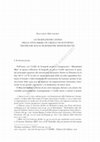
Filologia Mediolatina, XXVII (2019), pp. 193-240, 2019
The Latin version of the Greek Βίος Σάββας by Cyril of Scythopolis turns out to be one of the mos... more The Latin version of the Greek Βίος Σάββας by Cyril of Scythopolis turns out to be one of the most remarkable enterprises among the translations from Greek to Latin realized during the Early Middle Ages. It is very likely that this translation, which was so far unstudied and is still unpublished, has been realized in Rome, within the alive Greek-Latin monastic milieu of the city.The Latin Vita Sabae has a surprisingly wide manuscript tradition, since it is conveyed by fourty-eight witnesses, dating back from the early 11th century (which is the only reliable terminus ante quem for the translation) to the 16th; a full inventory with bibliography is provided. Generally, the Latin text matches quite precisely the wording of the Greek original. Nevertheless, there are many passages where the Latin text, compared to the Greek, has been slightly shortened and modified; moreover, some brief sections have been cut off. These features are shared by all but one manuscript: the ms. Roma, Biblioteca Vallicelliana, tomo V, in fact, preserves a fragment of the Vita Sabae which was copied from a strict verbum-de-verbo translation of the original Greek (the fragment is edited in the Annexes). Such a significant discovery allows us to demonstrate that the extant and widespread Latin redaction is a rewriting of a previous, literal and rough translation, that afterwards had almost disappeared. All the 47 manuscripts with the rewritten redaction are indeed epitomes.Two chap- ters of the Greek (nn. 44 and 65) are missing from all of them, and only two codices contain nearly the whole remaining text (Bruxelles, BR, 9920-31 and Vatican, Arch. S. Pietro A.5); the other 45 transmit different selections of episodes.The col- lation of the fifteen main witnesses, with the survey of some others, shows that this tradition stemmed from an already shortened archetype, and that it early split into a Roman and a Beneventan branches. Moreover, this collation allows to establish some criteria that will prove reliable towards a full recensio, in view of a critical edition of the Latin Vita Sabae.
Analecta Bollandiana., 137.I (2019), pp. 7-57, 2019
Summary. The ms. Torino, Bibl. Naz., F.III.16 (Bobbio Abbey, Xth c.) conveys an outstanding colle... more Summary. The ms. Torino, Bibl. Naz., F.III.16 (Bobbio Abbey, Xth c.) conveys an outstanding collection of hagiographic texts, made of early medieval translations from Greek into Latin and of Passiones of Roman martyrs: most of them feature an- cient textual traits that have not survived in any other codex. Through philological and codicological evidence, it is argued that this collection preserves an ancient,
“originary” Passionary arranged in 7 -cent. Rome. We do not know how it reached
Bobbio, but it was preserved there and, eventually, copied in the Turin manuscript. An updated status quaestionis for each text of the collection is provided, including new philological remarks about their relationships with the redactions transmitted by the other witnesses.
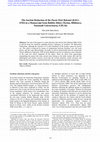
II Jornadas Predoctorales en Estudios de la Antigüedad y de la Edad Media. Κτῆμα ἐς αἰεὶ: el texto como herramienta común para estudiar el pasado. Proceedings of the Second Postgraduate Conference in Studies of Antiquity and Middle Ages, Universitat Autònoma de Barcelona, 19‐21th November 2014, 2016
The aim of this paper is to show that the Latin Passio Petri Balsami (BHL 6702) is derived from t... more The aim of this paper is to show that the Latin Passio Petri Balsami (BHL 6702) is derived from the narration regarding Πετρός Ἀψέλαμος in Eusebius' De Martyribus Palaestinae, although the existence of a Latin translation of the treatise cannot be proved yet. The result is achieved by means of comparisons between Eusebius' text, the Latin passio, and the Latin Martyrologia. Secondly, it will be demonstrated that the manuscript Torino, Biblioteca Nazionale, F.III.16 (from Bobbio) conveys an unknown, prior redaction of the Latin text which originated all the others. There are about forty manuscripts transmitting the passio (the most ancient ones belong to the ninth century AD) and the philological and stylistic surveys reveal that the second redaction, which increases and improves the Latin text, was derived from the version contained in the Turin manuscript.











Uploads
Books by Riccardo Macchioro
The byzantine legend of saint Tryphon achieved resounding success in the West: the aim of the present volume is to interpret the relationship between the various Latin redactions of the text – spread all over medieval Europe – and the original Greek model. A survey of the Latin manuscript tradition, systematically compared to the Greek manuscripts, leads to the hypothesis that four versions of the Greek «passio» were actually written: this volume offers the critical edition of each of these versions.
Edited Books by Riccardo Macchioro
Papers by Riccardo Macchioro
“originary” Passionary arranged in 7 -cent. Rome. We do not know how it reached
Bobbio, but it was preserved there and, eventually, copied in the Turin manuscript. An updated status quaestionis for each text of the collection is provided, including new philological remarks about their relationships with the redactions transmitted by the other witnesses.
The byzantine legend of saint Tryphon achieved resounding success in the West: the aim of the present volume is to interpret the relationship between the various Latin redactions of the text – spread all over medieval Europe – and the original Greek model. A survey of the Latin manuscript tradition, systematically compared to the Greek manuscripts, leads to the hypothesis that four versions of the Greek «passio» were actually written: this volume offers the critical edition of each of these versions.
“originary” Passionary arranged in 7 -cent. Rome. We do not know how it reached
Bobbio, but it was preserved there and, eventually, copied in the Turin manuscript. An updated status quaestionis for each text of the collection is provided, including new philological remarks about their relationships with the redactions transmitted by the other witnesses.
Canon Law (Wednesday 6 July, 11.15 – 12.45, Newlyn Building: LG.01)
Sermons (Wednesday 6 July, 16.30-18.00, Clarendon Building: 2.01)
Liturgy (Thursday 7 July, 11.15-12.45, Esther Simpson Building: 3.01)
The meeting gathers scholars who engage in groundbreaking projects in the field of digital manuscript studies. It brings together colleagues who work from methodological and theoretical perspectives with those who apply digital techniques to specific subjects, and thus hopes to facilitate fruitful interactions between bottom-up and top-down approaches. The conference environment is designed to stimulate dialogue and knowledge exchange: we consider cooperation, interoperability and integration at the largest scale as essential to realize the potential of digital manuscript studies, and to help each other in the search for a dynamic, secure and cooperative future for the field.
The workshop will offer an opportunity to consider these and other questions in a comparative manner, bringing together scholars working on a wide range of traditional cultures.
Ildebrando, vescovo di Firenze dal 1008 al 1024, scelto tra coloro che accompagnarono a Roma Enrico II per essere incoronato dal papa Benedetto VIII, promosse nel 1018 la fondazione del più celebre monastero fiorentino, nel nome di san Miniato, che la tradizione voleva martire delle persecuzioni di Decio alla metà del III secolo. L’abbazia
avrebbe dovuto affiancarlo nella conduzione della diocesi e nell’iniziativa di riforma ed è in qualche modo uno degli eventi-segnale della grande trasformazione che investe l’Europa e, in essa la cristianità, nel passaggio dell’anno Mille. Una consapevolezza nuova del significato della persona comincia ad esprimersi, accompagnato dal maturare
di nuove forme della vita intellettuale ed istituzionale, nella realtà politica e in quella ecclesiastica. Processi nuovi e innovativi si avviano, tra le contraddizioni, generando energie impensate: in larga parte a fondamento di una nuova Europa. L’Abbazia di San Miniato, la Fondazione Ezio Franceschini e la Società Internazionale per lo Studio del Medioevo Latino hanno ritenuto importante dedicare al tema un convegno internazionale di studio. Esso si articolerà in tre parti, ricostruendo la storia culturale e politica di Firenze e dell’area appenninica al passaggio dell’anno Mille.
mentre nella tradizione monastica altomedievale essa risulterebbe del tutto assente. I lettori di testi agiografici verificano questo dato,
che è però talvolta messo in discussione dai segni di una diversa e precoce esigenza spirituale, che pare voler dare maggiore spazio
all’affettività, all’emozione e al corpo. Quest’altra esigenza può dar luogo, per altro, a varietà redazionali che sembrano a volte volerla
attenuare o nascondere. L’entità del fenomeno – e in generale la cognizione delle diverse sensibilità spirituali presenti nell’agiografia
altomedievale - è difficile da precisare, forse proprio perché le diffrazioni redazionali dei testi agiografici sono poco studiate: la
descrizione delle grandi raccolte di Passiones di cui disponiamo non è ancora tale da dare evidenza alle diverse situazioni redazionali
attestate nei singoli testi raccolti. Una descrizione più analitica degli elementi che formano i numerosissimi passionari conosciuti
potrebbe documentare meglio quanto oggi risulta occasionale. Per questo il seminario, dopo aver presentato casi di sensibilità mistica
nell’agiografia altomedievale, si occuperà del problema delle diverse redazioni dei testi raccolti nei passionari, anche in relazione a un
progetto della S.I.S.M.E.L. dedicato a un’infrastruttura per la descrizione di tali collezioni.
Il seminario si terrà presso la sede della Fondazione, il 22 maggio 2017 dalle ore 10.30 alle 17.00, in via Montebello 7, Firenze.
Interverranno: Antonella Degl'Innocenti; Daniele Solvi; Donatella Manzoli; Giuseppe Cremascoli; Francesco Santi; Riccardo Macchioro; Silvia Nocentini; Pierluigi Licciardello; Gaia Sofia Saiani; Emore Paoli.